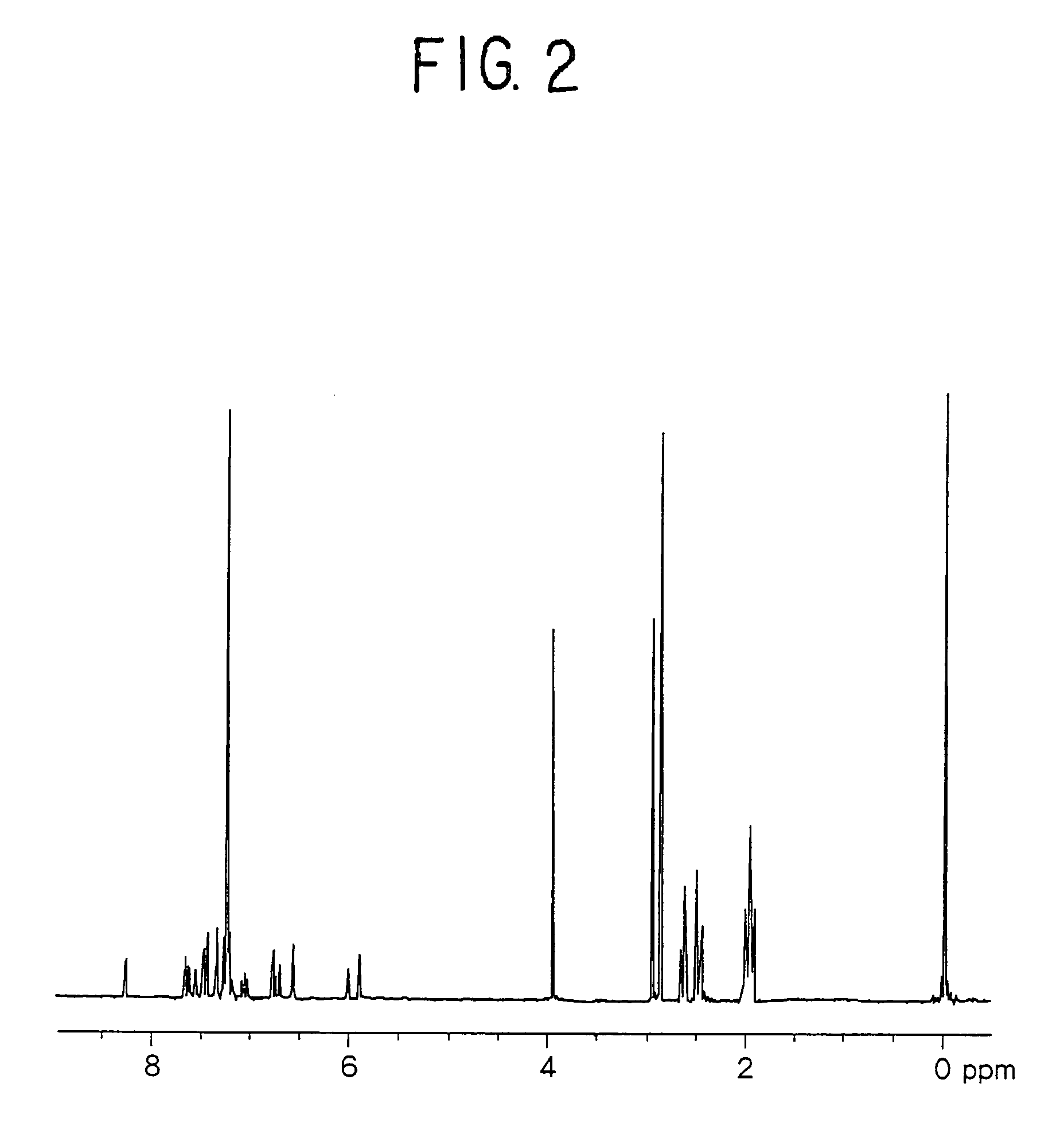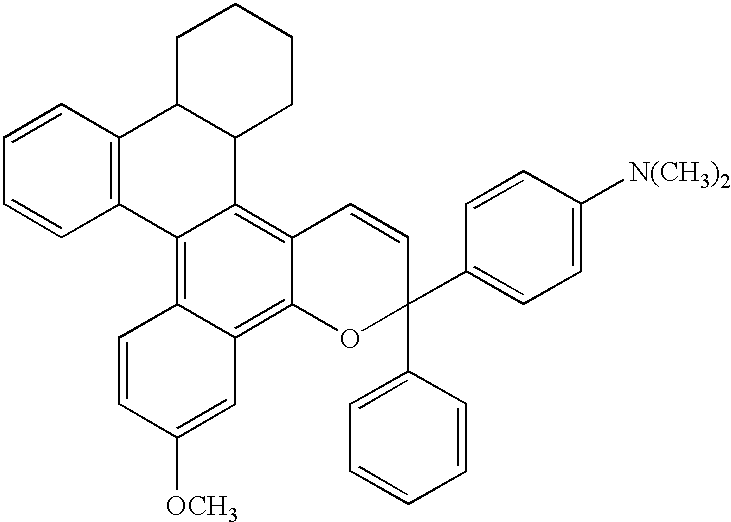Chromene compound
a compound and chrome technology, applied in the field of chrome compound, can solve the problems of small color fading rate, low color fading rate defect, and inability to develop, and achieve the effect of large color fading ra
- Summary
- Abstract
- Description
- Claims
- Application Information
AI Technical Summary
Benefits of technology
Problems solved by technology
Method used
Image
Examples
example 1
[0140]6.6 Grams (0.02 mols) of the following naphthol derivative
[0141]
and 5.5 g (0.022 mols) of the following propargyl alcohol derivative
[0142]
were dissolved in 50 ml of toluene, followed by the addition of 0.05 g of a p-toluenesulfonic acid, and the mixture was stirred at a refluxing temperature for one hour. After the reaction, the solvent was removed, and the reaction product was refined by chromatography on silica gel to obtain 3.9 g of a pale bluish powdery product, yield, 35%.
[0143]Elemental analysis of the product showed C, 85.23%, H, 6.62%, N, 2.51%, O, 5.73%, which were in very good agreement with the calculated values of C, 85.22%, H, 6.62%, N, 2.48%, O, 5.68% of C40H37NO2.
[0144]A measurement of a proton nuclear magnetic resonance spectrum indicated a peak of 19H based on an alkylene group near δ 1.0 to 4.0 ppm, and a peak of 18H based on an aromatic proton and an alkene proton near δ 5.6 to 9.0 ppm (FIG. 1).
[0145]Further, a measurement of a 13C-nuclear magnetic resonance...
examples 2 to 36
[0148]Chromene compounds shown in Tables 1 to 9 were synthesized in the same manner as in Example 1. The obtained products were analyzed for their structures relying on the same means for confirming structure as that of Example 1. It was confirmed that the obtained products were the compounds represented by the structural formulas shown in Tables 1 to 9. Tables 1 to 9 also show their yields.
[0149]In the structural formulas shown in Tables 1 to 9, Me represents a methyl group.
example 37
[0150]5.8 Grams (0.02 mols) of the following naphthol derivative
[0151]
and 5.5 g (0.022 mols) of the propargyl alcohol derivative used in Example 1 were dissolved in 50 ml of toluene, followed by the addition of 0.05 g of a p-toluenesulfonic acid, and the mixture was stirred at a refluxing temperature for one hour. After the reaction, the solvent was removed, and the reaction product was refined by chromatography on silica gel to obtain 2.9 g of a pale bluish powdery product, yield, 28%.
[0152]Elemental analysis of the product showed C, 84.89%, H, 6.34%, N, 2.68%, O, 6.08%, which were in very good agreement with the calculated values of C, 84.86%, H, 6.35%, N, 2.67%, O, 6.11% of C37H33NO2.
[0153]A measurement of a proton nuclear magnetic resonance spectrum indicated a peak of 15H based on an alkylene group near δ 1.0 to 4.0 ppm, and a peak of 18H based on an aromatic proton and an alkene proton near δ 5.6 to 9.0 ppm (FIG. 2).
[0154]Further, a measurement of a 13C-nuclear magnetic resona...
PUM
| Property | Measurement | Unit |
|---|---|---|
| wavelength | aaaaa | aaaaa |
| wavelength | aaaaa | aaaaa |
| wavelength | aaaaa | aaaaa |
Abstract
Description
Claims
Application Information
 Login to View More
Login to View More - R&D
- Intellectual Property
- Life Sciences
- Materials
- Tech Scout
- Unparalleled Data Quality
- Higher Quality Content
- 60% Fewer Hallucinations
Browse by: Latest US Patents, China's latest patents, Technical Efficacy Thesaurus, Application Domain, Technology Topic, Popular Technical Reports.
© 2025 PatSnap. All rights reserved.Legal|Privacy policy|Modern Slavery Act Transparency Statement|Sitemap|About US| Contact US: help@patsnap.com



